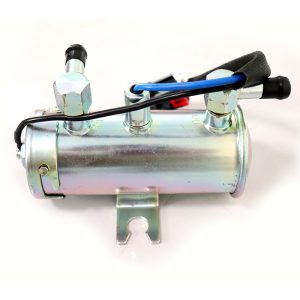An electronic fuel pump is an essential component in a modern vehicle’s fuel system, responsible for delivering the required amount of pressurized fuel to the engine. In this article, we will explore the purpose and functions of an electronic fuel pump in detail.
Fuel Delivery
The primary function of an electronic fuel pump is to deliver fuel from the fuel tank to the engine at a consistent pressure and flow rate. The fuel is pumped through a series of fuel lines, filters, and injectors (in a fuel-injected system) or a carburetor (in a carbureted system). The electronic fuel pump typically operates at a variable speed controlled by the engine management system, based on real-time inputs such as engine load, throttle position, and air-fuel ratio.
Fuel Pressure Control
In a fuel injection system, the electronic fuel pump plays a crucial role in maintaining and regulating the fuel pressure at the appropriate level. Fuel pressure is critical in ensuring proper atomization and delivery of fuel to the engine cylinders. The fuel pressure is monitored continuously by the engine control unit (ECU), which adjusts the pump speed and other parameters accordingly. The electronic fuel pump may also have a built-in pressure regulator that maintains a constant pressure differential between the fuel inlet and outlet.
Fuel System Priming
Before the engine is started, the fuel system needs to be primed to fill up the fuel lines and injectors with fuel. The electronic fuel pump can perform this task by running for a few seconds when the ignition key is turned to the “on” position before starting the engine. This process ensures that there is enough fuel available for the engine to operate smoothly from the start.
Fuel Economy and Emissions
Modern electronic fuel pumps are designed to optimize fuel economy and reduce emissions, by delivering the right amount of fuel at the right time and in the correct manner. For instance, some electronic fuel pumps use variable speed motors to adjust the fuel flow rate according to the engine requirements, which helps to minimize fuel consumption and exhaust emissions. The electronic fuel injection system can also incorporate auxiliary sensors such as oxygen sensors, mass airflow sensors, and coolant temperature sensors to further optimize the fuel-air mixture.
Safety Features
Electronic fuel pumps may have various safety features that protect the engine and the fuel system from damage or malfunction. For example, some pumps have built-in pressure relief valves that open when the pressure exceeds a certain threshold, preventing the fuel system from over-pressurizing. Other pumps may have internal thermal overload protection that shuts down the pump when it reaches a certain temperature to prevent overheating and damage.
In conclusion, the electronic fuel pump is a crucial component in a modern vehicle’s fuel system, responsible for delivering, regulating, and optimizing fuel supply to the engine. Its functions extend beyond simple fuel delivery, including fuel pressure control, system priming, fuel economy, emissions reduction, and safety features. By ensuring reliable and efficient fuel supply to the engine, the electronic fuel pump contributes to better engine performance, fuel efficiency, and reduced emissions.



